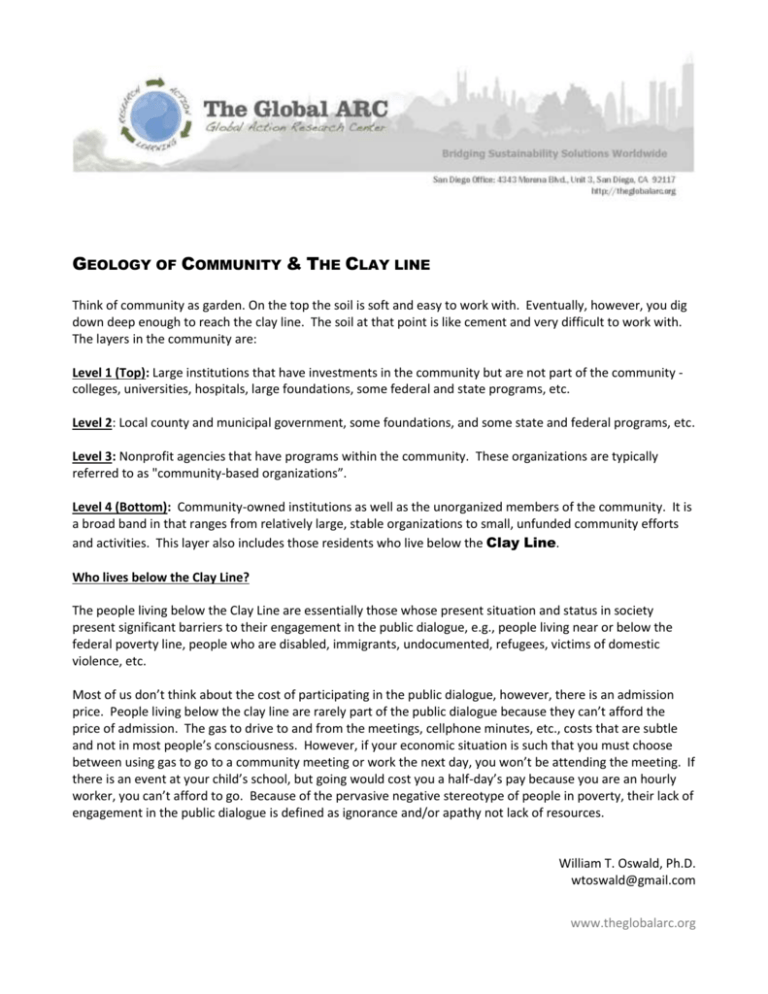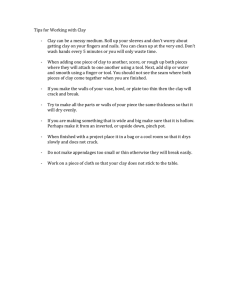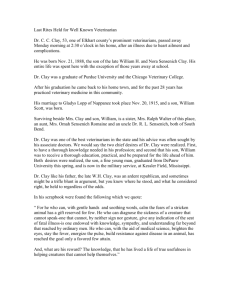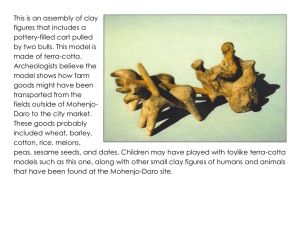Geology of Community & The Clay line
advertisement

GEOLOGY OF COMMUNITY & THE CLAY LINE Think of community as garden. On the top the soil is soft and easy to work with. Eventually, however, you dig down deep enough to reach the clay line. The soil at that point is like cement and very difficult to work with. The layers in the community are: Level 1 (Top): Large institutions that have investments in the community but are not part of the community colleges, universities, hospitals, large foundations, some federal and state programs, etc. Level 2: Local county and municipal government, some foundations, and some state and federal programs, etc. Level 3: Nonprofit agencies that have programs within the community. These organizations are typically referred to as "community-based organizations”. Level 4 (Bottom): Community-owned institutions as well as the unorganized members of the community. It is a broad band in that ranges from relatively large, stable organizations to small, unfunded community efforts and activities. This layer also includes those residents who live below the Clay Line. Who lives below the Clay Line? The people living below the Clay Line are essentially those whose present situation and status in society present significant barriers to their engagement in the public dialogue, e.g., people living near or below the federal poverty line, people who are disabled, immigrants, undocumented, refugees, victims of domestic violence, etc. Most of us don’t think about the cost of participating in the public dialogue, however, there is an admission price. People living below the clay line are rarely part of the public dialogue because they can’t afford the price of admission. The gas to drive to and from the meetings, cellphone minutes, etc., costs that are subtle and not in most people’s consciousness. However, if your economic situation is such that you must choose between using gas to go to a community meeting or work the next day, you won’t be attending the meeting. If there is an event at your child’s school, but going would cost you a half-day’s pay because you are an hourly worker, you can’t afford to go. Because of the pervasive negative stereotype of people in poverty, their lack of engagement in the public dialogue is defined as ignorance and/or apathy not lack of resources. William T. Oswald, Ph.D. wtoswald@gmail.com www.theglobalarc.org










![[1.1] Prehistoric Origins Work Sheet](http://s3.studylib.net/store/data/006616577_1-747248a348beda0bf6c418ebdaed3459-300x300.png)
